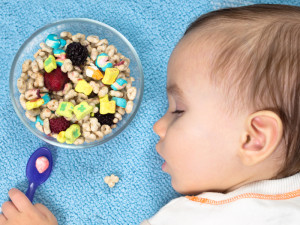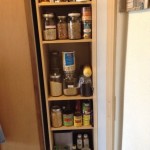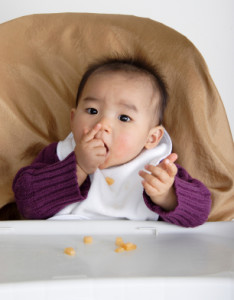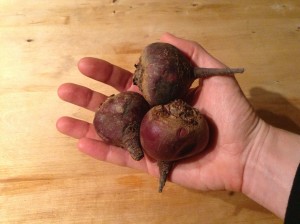Food Rewards - How to Get Your Child to Behave Without Them
/I was happy to meet Julie recently. She's a child behaviour and discipline specialist. As soon as I met her I knew that she would be the perfect person to answer a question that parents often ask me. You see, I teach (based on the research) that it's not good to use food as a bribe or reward for kids behaviour. So parents would ask me for alternatives. And that's where I hit the end of my expertise - I'm a child-feeding expert - not a child behaviour expert. Read on to see what Julie recommends as alternatives to food for teaching kids to have good behaviour.
Enjoy! Kristen
- Chocolate to stop crying.
- Dessert if you finish all of your dinner.
- Candy to buy a few extra minutes of peace & quiet.
Why Food Rewards Are A Bad Idea
Parents give food rewards to their children because it works……for the short term, plain and simple. However, the long term effects on the child may include poor appetite management, low self-esteem and distorted food control because they have now associated food with negative behaviour and/or pain. This learned behaviour could possibly leave your child with a potential food addiction which can carry right on through the teen years and well into adulthood.
There are many other ways to encourage your children to do what you expect of them without bribes, threats or rewards. Add more options to your Parenting toolbox so you are not left with food rewards as your only option.
5 of our BEST BEHAVIOUR Techniques (Without Food Rewards)
- Expectations & Routines – create routines throughout the day with your expectations in them
- Visuals – create a chart, poster or picture for each routine & reference them throughout the day
- Choices – offer your child at least 2 things to choose from instead of just demanding something
- Follow through – what you say…..you do!
- Consistency - say & do the same thing each and every time the same behaviour shows up
Try all 5 together for the BEST RESULTS!
Find out more on this topic and many others at www.missbehaviour.ca.
Learn about Julie Romanowski, Mom, Early Childhood Consultant & owner of
Miss Behaviour: parenting coach & consultant service.
"CHILDREN'S BEHAVIOUR & DISCIPLINE SPECIALISTS!" behaviour - discipline - tantrums - communication - interactions - daily routines – solutions






 Recently a parent asked me this question: “How much cow’s milk to offer toddlers. Do you allow them to regulate/drink as much as they want or just fill the cup up once and then when it's empty that's it? Being only 17 months, he can fill up pretty quick on milk during the meal, but I also don't want to be taking it away. I would prefer to just allow him to self regulate, but not sure what to do once the sippy cup is empty.”
Recently a parent asked me this question: “How much cow’s milk to offer toddlers. Do you allow them to regulate/drink as much as they want or just fill the cup up once and then when it's empty that's it? Being only 17 months, he can fill up pretty quick on milk during the meal, but I also don't want to be taking it away. I would prefer to just allow him to self regulate, but not sure what to do once the sippy cup is empty.”
 {
{
 It happened again yesterday. I was leading a workshop and a parent asked me: “Is it wrong to give my child smoothies with veggies in them? Is this considered hiding veggies?” Rarely a workshop goes by without a parent asking me about smoothies for their picky eater kids. They’re such a popular trend these days. While I touched on this in last week’s blog post; it’s such a common question that I get about healthy snacks for kids that I thought that it was worthwhile to expand on it today. And, share some ideas for smoothie ingredients.
It happened again yesterday. I was leading a workshop and a parent asked me: “Is it wrong to give my child smoothies with veggies in them? Is this considered hiding veggies?” Rarely a workshop goes by without a parent asking me about smoothies for their picky eater kids. They’re such a popular trend these days. While I touched on this in last week’s blog post; it’s such a common question that I get about healthy snacks for kids that I thought that it was worthwhile to expand on it today. And, share some ideas for smoothie ingredients. I shared this post previously with the
I shared this post previously with the  You’ve probably heard that it’s great to get your kids to help you in the kitchen to learn cooking skills, instill healthy eating habits, and more.
You’ve probably heard that it’s great to get your kids to help you in the kitchen to learn cooking skills, instill healthy eating habits, and more. March is Nutrition Month!
March is Nutrition Month! {Guest post I contributed to the
{Guest post I contributed to the  Thank you to the parent at a recent workshop in Victoria BC who asked this baby feeding question: "What does it mean when I see whole pieces of food in my baby’s poop?" It’s amazing the topics of conversation that you have once becoming a parent, eh?!
This Mom had recently started feeding her baby finger foods and was seeing pieces of food in her baby’s diaper. It’s often not talked about, but when you start to feed your baby solid foods, you will see a change in their bowel movements.
Thank you to the parent at a recent workshop in Victoria BC who asked this baby feeding question: "What does it mean when I see whole pieces of food in my baby’s poop?" It’s amazing the topics of conversation that you have once becoming a parent, eh?!
This Mom had recently started feeding her baby finger foods and was seeing pieces of food in her baby’s diaper. It’s often not talked about, but when you start to feed your baby solid foods, you will see a change in their bowel movements. Kids begging for food while you're cooking. Do you experience this common situation? You rush home from work and daycare pick-up, drop your bag and coat, and immediately get to work in the kitchen making dinner (or should I say figuring out what’s for dinner and then making it?). As you’re cooking, your little one suddenly is famished. They’re underfoot, claiming that they’re “staaaarrrvvving” and begging you for something to eat. Saying that they couldn’t possibly wait the 10 minutes until dinner is ready.
Kids begging for food while you're cooking. Do you experience this common situation? You rush home from work and daycare pick-up, drop your bag and coat, and immediately get to work in the kitchen making dinner (or should I say figuring out what’s for dinner and then making it?). As you’re cooking, your little one suddenly is famished. They’re underfoot, claiming that they’re “staaaarrrvvving” and begging you for something to eat. Saying that they couldn’t possibly wait the 10 minutes until dinner is ready. {Guest Post at
{Guest Post at  Thank you to the VIP who asked this question: "Does my 7 month old baby need water?". The short answer is: No. Seven month olds don’t
Thank you to the VIP who asked this question: "Does my 7 month old baby need water?". The short answer is: No. Seven month olds don’t Aah, beets. These versatile root veggies are one of my favourites! As a dietitian, part of my job is to know how to prepare healthy foods like beets. So I’m sharing a couple of my favourite ways to use them. A classic storage, root veggie, you can find local ones (fairly cheap) throughout the winter here in Victoria, BC.
Aah, beets. These versatile root veggies are one of my favourites! As a dietitian, part of my job is to know how to prepare healthy foods like beets. So I’m sharing a couple of my favourite ways to use them. A classic storage, root veggie, you can find local ones (fairly cheap) throughout the winter here in Victoria, BC. Hallowe’en is a fun and exciting holiday for kids. And, while as a parent you may not love the idea of all that Halloween candy, the last thing that you want to add to an already hectic day is a battle over food.
Here’s some ideas about how to handle all that Halloween candy.
Hallowe’en is a fun and exciting holiday for kids. And, while as a parent you may not love the idea of all that Halloween candy, the last thing that you want to add to an already hectic day is a battle over food.
Here’s some ideas about how to handle all that Halloween candy.
